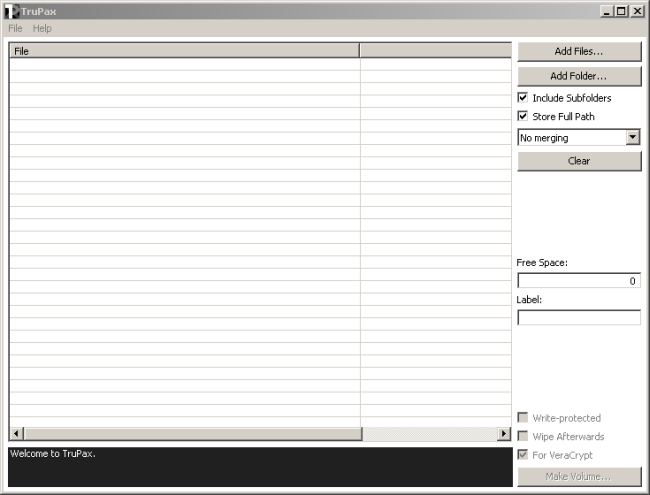Using trupax to Automate the Creation of TrueCrypt/VeraCrypt Containers

I’ve recently found a great tool for archiving files. I think you’ll want to check out truepax. This open-source tool is cross-platform (made in java, unfortunately), and it features
the ability to create TrueCrypt and Veracrypt containers on the fly. Even better, trupax doesn’t require the installation of those tools to work. truepax might your file archiving process faster and more secure than ever before.
Often, this kind of archiving is done with either a copy tool or the automated use of a compression app. Tools like RAR can be handy if you want to encrypt the archive by adding a password, but this is a one-way process. Updating those archives is very cumbersome. But, these limitations don’t apply to the more robust encrypters like TrueCrypt and VeraCrypt. The perfect scenario for archived data would be protecting it well, making it easy to access directly, and having read/write abilities in specific scenarios. TrueCrypt and VeraCrypt containers fit, and fit well, but have thus far been cumbersome as archive containers.
The challenge for using the two “Crypt” tools as archivers is the slow process of creating the containers. This is where truepax shines. Once downloaded, run the supplied trupaxgui command, add files or folders. Then click “Make Volume” and supply a password. This gives you a file you can open up in TrueCrypt at any time with that password.

Included is the command-line tool (which would probably be your default on Linux). Using this on Windows takes a little finesse – but can be used to automate an encrypted archival completely from the shell. The command for encrypting a long name folder on a Windows machine while including a password looks like this:
{pathto}trupax -v –password=makeitgood testfolder.tc “c:/Test Folder”
Another question you may be thinking, what about re-sizing the encrypted volume afterward creating it? Is this possible? With trupax, it would be possible with two commands: One to extract an archive, and another command creating a new archive with the –free-space command line parameter. Tools like extcv appear to be filling that void (if needed).
The real power of creating TrueCrypt and VeraCrypt containers can lie in our ability to encrypt and control all active and dormant data no matter where it may be sitting. If we are going to see the kind of ubiquitous user-controlled strong encryption of files that can drive the future of data storage – these tools are going to make a bridge that divides.
truepax 9 is available for download at Coderslagoon. The GPLv3 licensed tool includes downloads for Windows, Linux (32/64bit) and OS X. Support for VeraCrypt was recently added.

